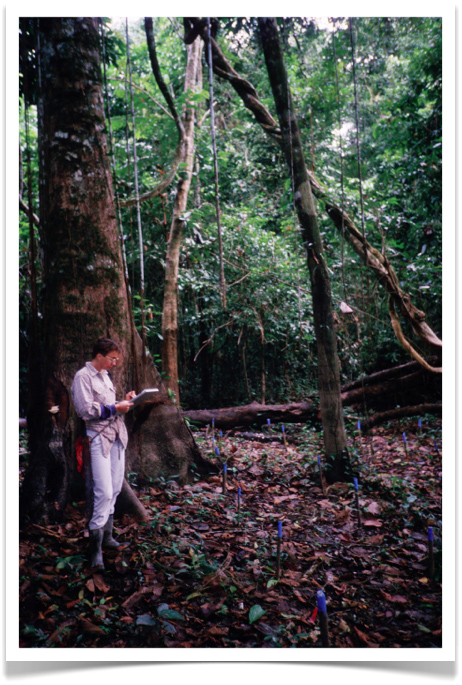
Knowing how much fruit a tree produces can be a very useful piece of information. It can give you some idea of how much fruit you can expect to harvest (and sell) from the forest, and it can provide insight into how many fruits you need to leave in the forest so that the tree will continue to regenerate itself. Yield studies can also be used to estimate rates of pollination, fruit set, fruit predation, and a host of other demographic parameters. Good estimates of fruit production provide the basis for sustainable forest use.
Unfortunately, we know very little about fruit production by tropical trees, even for valuable species like Brazil nut, mahogany, or rubber. Goes a long way in explaining the currently dismal situation with a lot of wild-harvested tropical forest resources. The image above shows sample traps in position under a large Spondias mombin ("uvos") tree in Peru to quantify fruit production. The fruits fall into the traps, the traps represent a certain percentage of the crown area of the tree, you count the former and multiply it by the latter to estimate total fruit yield. Really not that hard to collect these data, and yet they are so rare. If you want to know the size-specific rate of fruit production for natural populations of Spondias in the Peruvian Amazon, click here. [NOTE: That's José Tuanama shown in the foreground; Umberto (see Umberto Pacaya) is visible in the background to the left. Elysa conducted the yield study of Spondias as part of her M.S. thesis].
 Monday, December 10, 2012 at 10:42AM
Monday, December 10, 2012 at 10:42AM 



